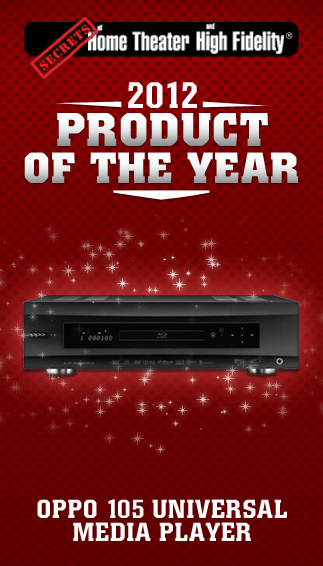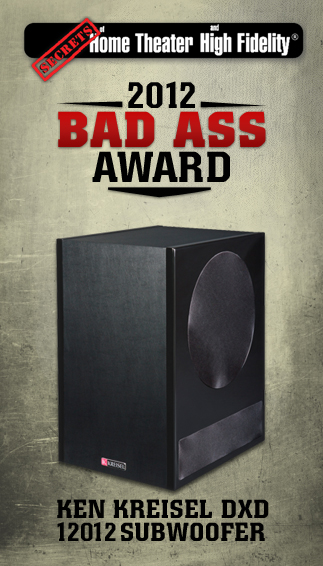The SECRETS Editorial Team is pleased to announce the Best of 2012 Awards. This year we have added another new category, Product- of- the-Year, in addition to our Best Products, Best Media and the “BAD ASS” Awards. The Editorial Team selected three Technologies to profile for the “Technologies-on- the- Rise Awards”. Check them out!!
Congratulations to all of our 2012 Winners!!
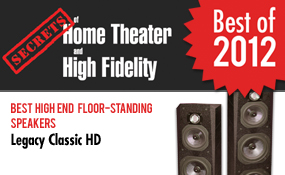 |
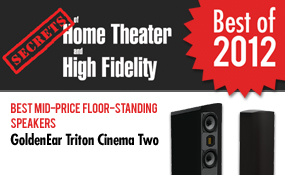 |
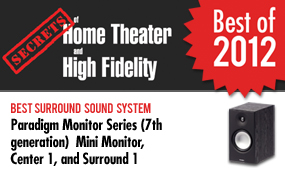 |
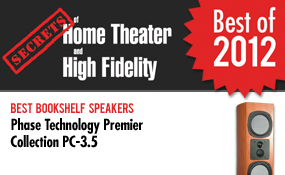 |
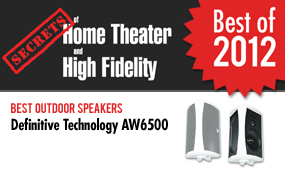 |
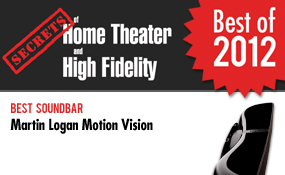 |
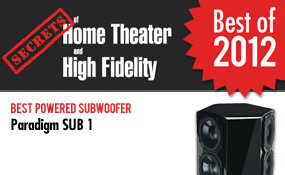 |
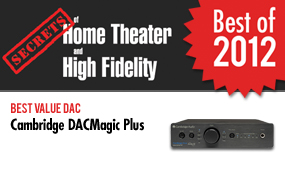 |
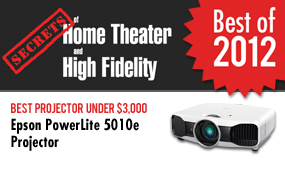 |
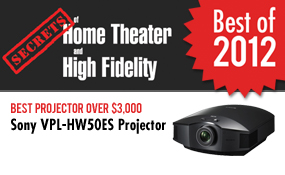 |
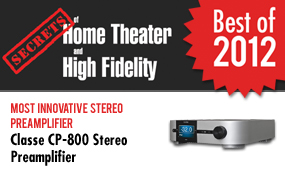 |
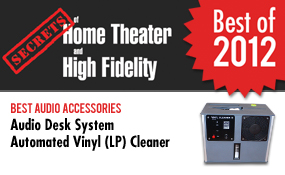 |
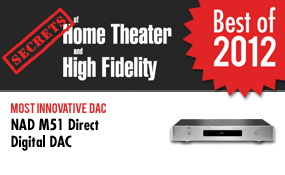 |
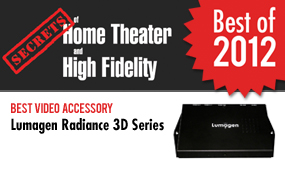 |
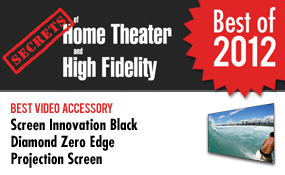 |
 |
 |
 |
 |
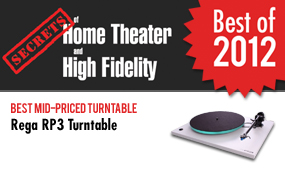 |
 |
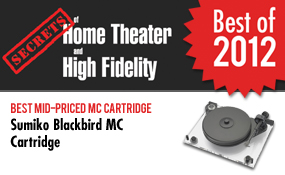 |
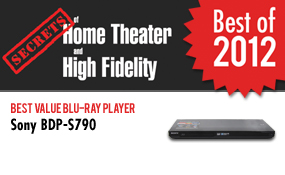 |
 |
 |
 |
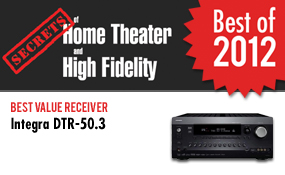 |
 |
Secrets 2012 Product of the Year

Secrets 2012 Bad Ass Award
Best Media Awards for 2012
This year we have added a Best of Award for 3D Movies along with our Blu-ray, CD and Vinyl awards.
 |
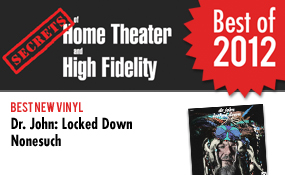 |
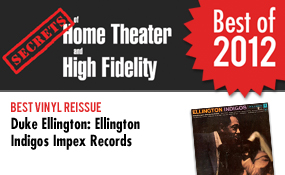 |
 |
 |
 |
Technologies on the Rise
Technologies on the Rise: Cube Calibration
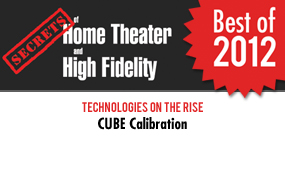
Over the past decade we’ve seen a steady rise in the availability of calibration controls inside of consumer displays. Once uncommon, you now expect to see at least a grayscale control, multiple color temperatures, and often gamma adjustments and a full color management system. This has enabled us to coax better images from our displays than ever before, but they all are subject to inherent limitations. We only calibration to six different color points (the primary and secondary colors), and often displays lack the proper bit depth, or even the correct formulas, to do the calculations to get colors correct.
This year we have seen the emergence of Cube Calibration technology being available to the consumer. Lumagen has added a 5 sided cube with 125 points (5^3) of data to their Radiance video processors, and SpectraCal has released their ColorBox that allows for up to 17 points per side for up to 262,000 points of data. Instead of only measuring those 6 points, a color cube measures multiple levels of intensity and saturation for each color, building a far more accurate table of values to understand how a display performs and correct for its behavior. Where we have been happy to see dE values on a display below 3 after calibration, after a cube calibration we are unhappy if they are above 1.0 at all.
Achieving this calibration requires software that can automate the process, but popular consumer packages like CalMAN and ChromaPure have added support for these features. In a single evening, with the appropriate equipment and know-how, a consumer can have a display that we can truly say has reference quality color and grayscale. Every display can be improved, all of your media can look better, and your home theater can be more enjoyable than ever before.
Chris Heinonen, Senior Editor
Technologies on the Rise: 4K Ultra HD
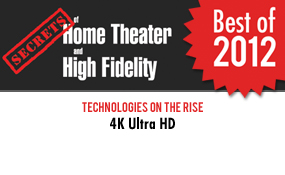
Just when you thought it was safe to purchase that 1080p LCD High Definition TV, because the price was cheap and there couldn’t possibly be any more improvements or features, such as 3D, that could be added . . . now comes the news that 4K HDTVs have actually been introduced at the consumer level. But wait a minute. They can’t be called High Definition because that specification only incorporates 720p and 1080i.
So we have, officially, Ultra HD, which has a resolution of 3840 x 2160. Also called 4K Ultra High Definition, Quad High Definition, Ultra High Definition, 4K Ultra HD, Quad Full High Definition, Quad Resolution, UHD, and a few others, it will soon just be good old 2160p.
Sony, Toshiba, JVC, Westinghouse, and LG have announced models at 84″, and the LG has been available in the US since October 2012, at $20,000. Sony’s 84″ will be $25,000.
Why 84″? Because Ultra HD is really designed for watching TV on a large screen. You have already been seeing 4K at movie theaters on their 40 foot screens and it looks gorgeous.
But what about at home? If you have a projector and a large motorized screen, putting in an 84″ Ultra HD flat panel display might not even make you blink . . . until you realize that the screen doesn’t roll up into the ceiling when you are done watching the movie. You will need a very big blank wall to mount it on, and there it will stay, even if you are playing Monopoly® with your family.
Nevertheless, early adopters with a no-limit credit card will undoubtedly be purchasing them.
But, but, but . . . where’s the content? Well, for now, there isn’t any. But you will have the advantage of seeing your 1080p movies upsampled to 2160p, and some Blu-ray players, such as the OPPO BDP-105, can do that already. Secondly, if you are interested in 3D, but don’t like those battery powered active 3D glasses, you can watch 3D on an Ultra HD using passive 3D glasses (polarized). Currently, passive 3D cuts the vertical resolution of HDTV in half, meaning that each eye only sees 540p. But, with Ultra HD, and passive 3D glasses, you will see 1080p in each eye, because cutting the native 2160p in half results in 1080p.
The bottom line is that within about 7 years, all of the HDTVs will be 4K, so put away the Valium®. You will find one at a very good price point, just like you did with your 1080p HDTV.
John E. Johnson, Jr.Editor-in-Chief
Technologies on the Rise: Cloud Technology

As consumers, we are confronted with a wide variety of download services that all promise to give us access to music and movies for our personal enjoyment. This downloadable content also needs to be available across the wide range of televisions, tablets, computers and phones that we may own. But what do we do if we already have a huge collection of movies and music that we want to share within our own homes and across our devices? While the answer used to be CD or DVD jukeboxes, a new trend is to take the content to the internet using cloud technology.
We use the term cloud in this context to refer to storage that is private to an individual consumer but that exists on computers hosted by service providers on the internet. All types of data including movies and music can be stored on these storage servers without concern for physical media or backups. The trick of course is for manufacturers to provide easy solutions for consumers to access this data and in the case of audio and video content, play the content back in high fidelity. We are already seeing the use of cloud technology from companies like Apple with their iCloud offering. Companies such as Amazon and Microsoft are offering personal cloud storage space. We are even seeing the concept of private clouds which provide the same functionality but store their data on private servers installed on home networks. Whether we like it or not, data is moving to the cloud, and it’s only a matter of time before we will access our music and movies from the cloud as well.
Robert Kozel, Senior Editor



